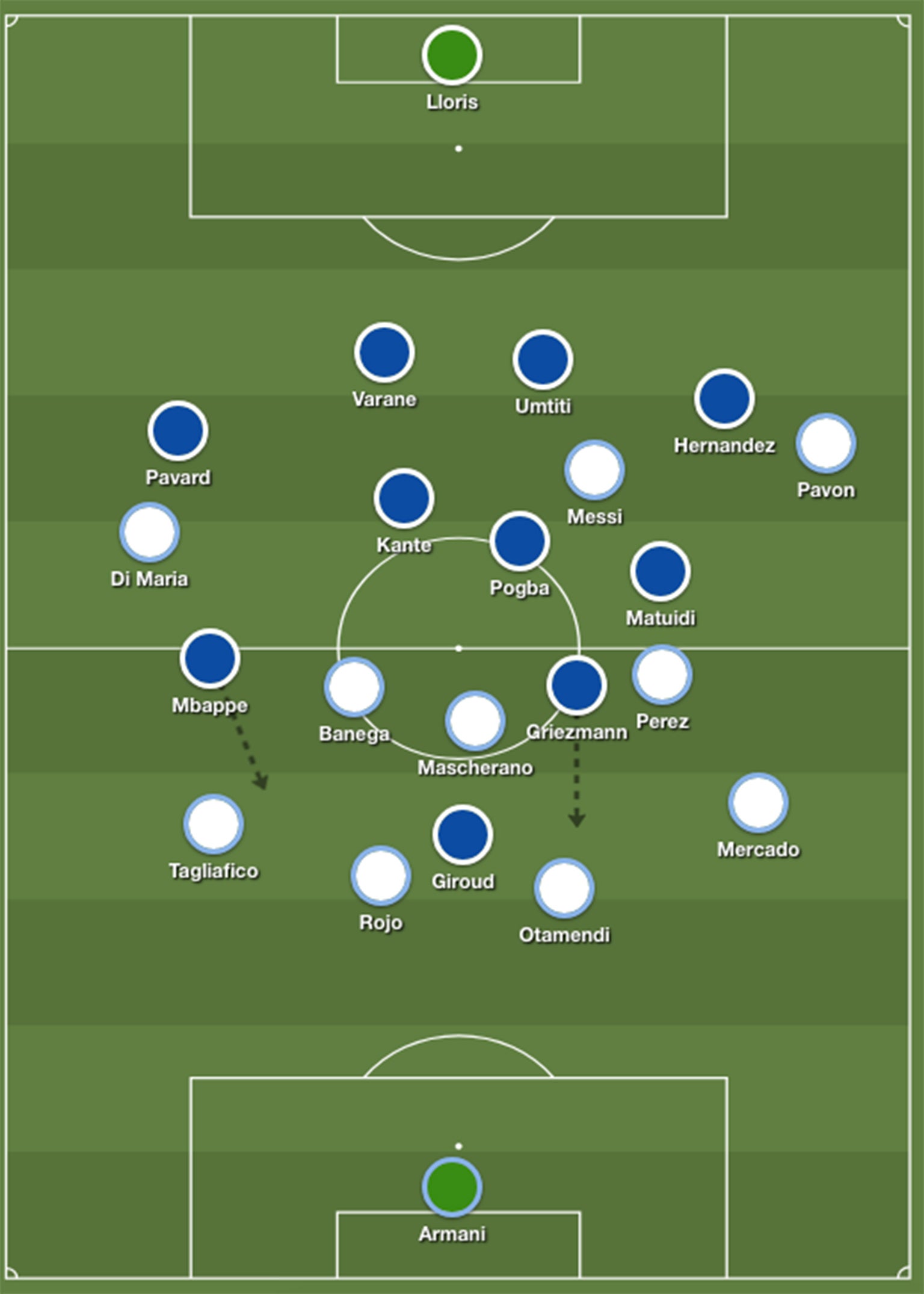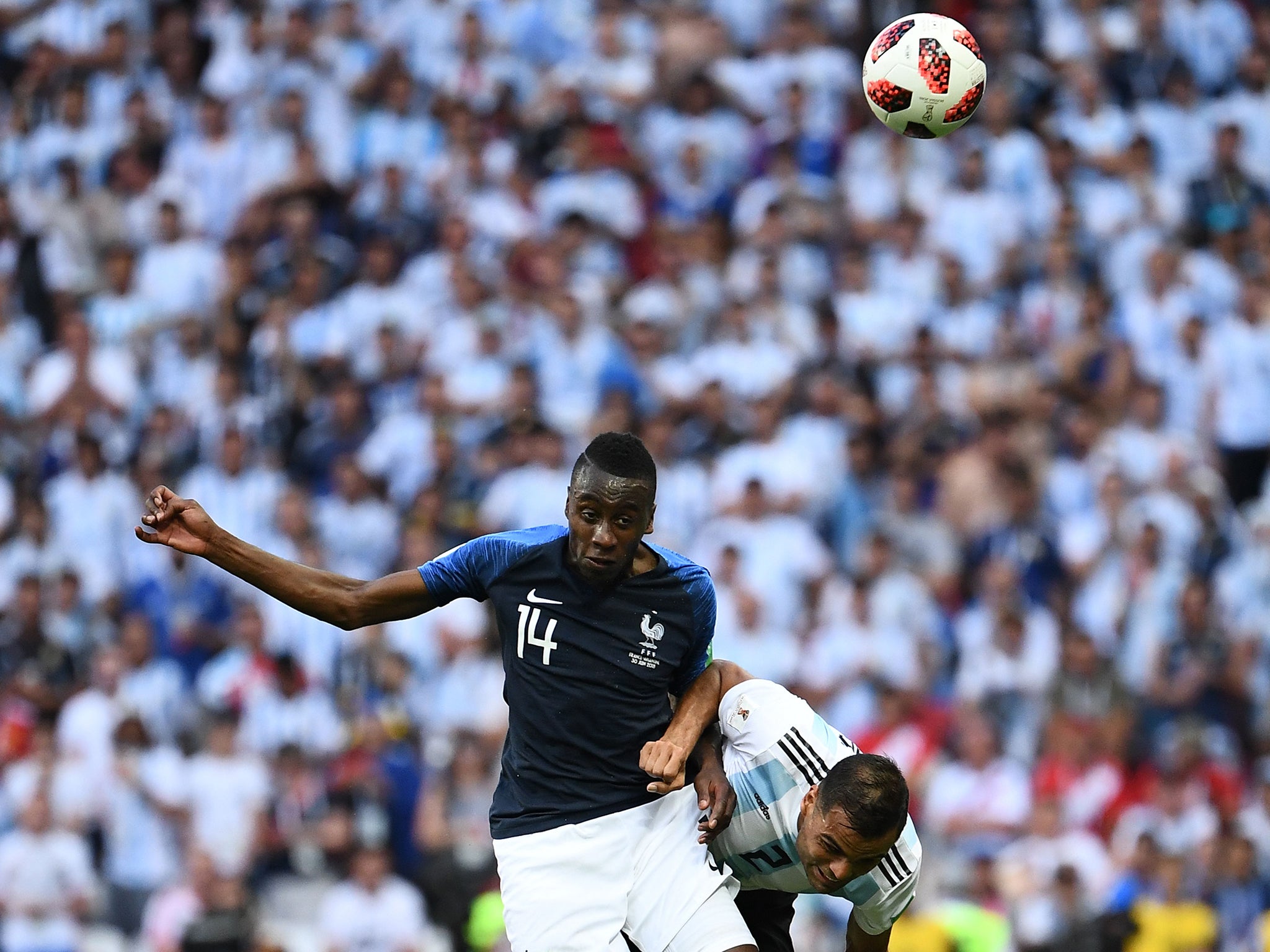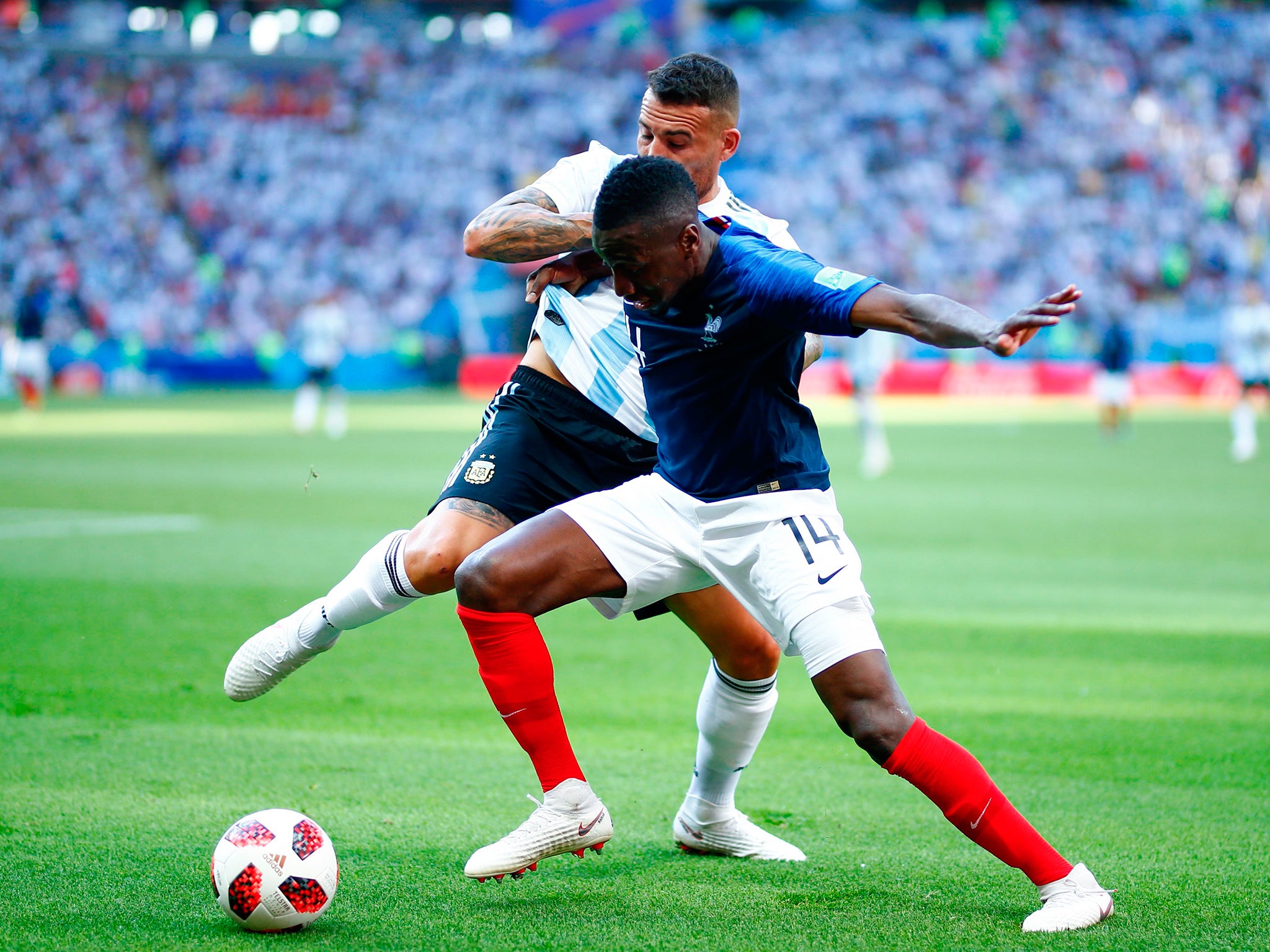World Cup 2018: How Blaise Matuidi laid the platform for Kylian Mbappe to put in the performance of the tournament
France appear to have settled on a winning formation mid-tournament as all recent winners seem to do, which should raise immediate warning signs for their future opponents

Your support helps us to tell the story
From reproductive rights to climate change to Big Tech, The Independent is on the ground when the story is developing. Whether it's investigating the financials of Elon Musk's pro-Trump PAC or producing our latest documentary, 'The A Word', which shines a light on the American women fighting for reproductive rights, we know how important it is to parse out the facts from the messaging.
At such a critical moment in US history, we need reporters on the ground. Your donation allows us to keep sending journalists to speak to both sides of the story.
The Independent is trusted by Americans across the entire political spectrum. And unlike many other quality news outlets, we choose not to lock Americans out of our reporting and analysis with paywalls. We believe quality journalism should be available to everyone, paid for by those who can afford it.
Your support makes all the difference.Didier Deschamps appeared entirely unsure of his best system ahead of the opening game of this tournament, but recent World Cup winners have tended to suddenly find their optimum formation midway through the tournament.
In 2002 Brazil clicked into gear once introducing a second holding midfielder, in 2006 Italy’s switch from 4-3-1-2 to 4-2-3-1 worked wonders, in 2010 Spain thrived once they added more directness and width to their attack, and Germany’s 2014 side changed considerably from their opening game to the final.
Here, France learned their lesson after their opening fixture against Australia, an underwhelming performance that eventually resulted in a 2-1 victory, largely thanks to Deschamps introducing Olivier Giroud, who provided his customary knock-downs and flick-ons to bring the best from France’s attacking midfielders. Giroud started the next game, a win over Peru, which necessitated Deschamps switching from 4-3-3 to 4-4-1-1, moving Kylian Mbappe into a wider position, and bringing in Blaise Matuidi on the left. Matuidi is an unfashionable player, about mobility and discipline rather than invention, but he makes this system work, tucking inside and supporting Paul Pogba and N’Golo Kante, while allowing Mbappe to play a more attacking role on the opposite flank.
Matuidi can perform almost any tactical role. Against Peru he was important because he defended against Luis Advincula, the dangerous attacking right-back. Here against Argentina, he played a crucial role in minimising the space afforded to Leo Messi. Jorge Sampaoli’s latest formation was a 4-3-3 with Messi deployed as a false nine, recalling his role for Pep Guardiola’s Barcelona. It didn’t work well: wingers Angel Di Maria and Carlos Pavon made the wrong runs, failing to offer a threat in behind. Messi, as always, dropped into deep, right-of-centre positions, aiming to receive passes and drift inside onto his left foot. Matuidi, though, was constantly positioned well to deny Argentina space down that flank, making a couple of excellent interceptions.

With a tactically disciplined player on the left, Deschamps can afford to field an outright attacker on the right, and Mbappe produced the performance of the World Cup so far, to the extent that the Paris Saint-Germain attacker is the new favourite to win the Golden Ball award. Allowed the freedom of the right flank, and constantly surging forward on the break, this was an astonishing demonstration of speed and close control.
Argentina simply couldn’t live with Mbappe’s pace. He was clumsily fouled by Javier Mascherano in a central position in the opening stages, with Antoine Griezmann slamming the resulting free-kick against the crossbar. That was the warning sign, and shortly afterwards something similar happened: Mbappe again countered with astonishing speed and this time it was Marcos Rojo who hauled him to the ground. Griezmann made no mistake from the penalty.

At 1-0 up, France continued to look for Mbappe on the run. 20 minutes in, Paul Pogba’s glorious straight pass over the top found him running through on goal, and this time it was Argentina’s left-back Nicolas Tagliafico who tripped him, just outside the box. Tagliafico was booked, and was subsequently forced to play 70 minutes against the incredible Mbappe too scared of making a tackle. Argentina needed to offer him some protection – a solid left-midfielder like Matuidi would have been handy. At half-time, Sampaoli had clearly instructed Argentina’s midfielders to push across and offer Tagliafico some support. It took only five minutes for Ever Banega to be booked for a completely unnecessary, dangerous challenge on the danger man. He wasn’t the only midfielder to be booked in the second half – Matuidi’s yellow card, seemingly for dissent, rules him out of France’s quarter-final against Uruguay.
Argentina somehow found themselves ahead thanks to Angel Di Maria’s stunning long-range strike and Gabriel Mercado’s fortunate goal. But, after Benjamin Pavard’s truly outstanding swerved equaliser, it became the Mbappe show once again. Having previously demonstrated his speed over 50 yards, it was his acceleration over five yards which allowed him space to fire home and put France 3-2 ahead.

It was France’s fourth and final goal, however, that demonstrated their combination play and the understanding between their front four. Kante dropped into defence to help France play out from the back, drawing Argentina up the pitch before cutting through their lines. Kante played a forward pass into Griezmann, who knocked the ball left to Matuidi, typically surging forward. He found Giroud, who played his role to perfection, slipping in a runner with a first-time pass, and Mbappe sidefooted coolly into the far corner.
The nature of that strike, with a central forward slipping the ball between full-back and centre-back for a wide forward running inside from deep, is exactly the type of goal Messi regularly assisted from his false nine role at Barcelona, presumably what Sampaoli was hoping for here. At least Messi’s final touch at this World Cup – and perhaps his final touch in an Argentina shirt – was an assist, for Sergio Aguero’s late consolation. But Messi’s was overshadowed by his opposite number, and the combination of Mbappe’s speed, Argentina’s openness and France’s newfound balance meant France produced a far more dominant performance than the scoreline would suggest.
Join our commenting forum
Join thought-provoking conversations, follow other Independent readers and see their replies
Comments